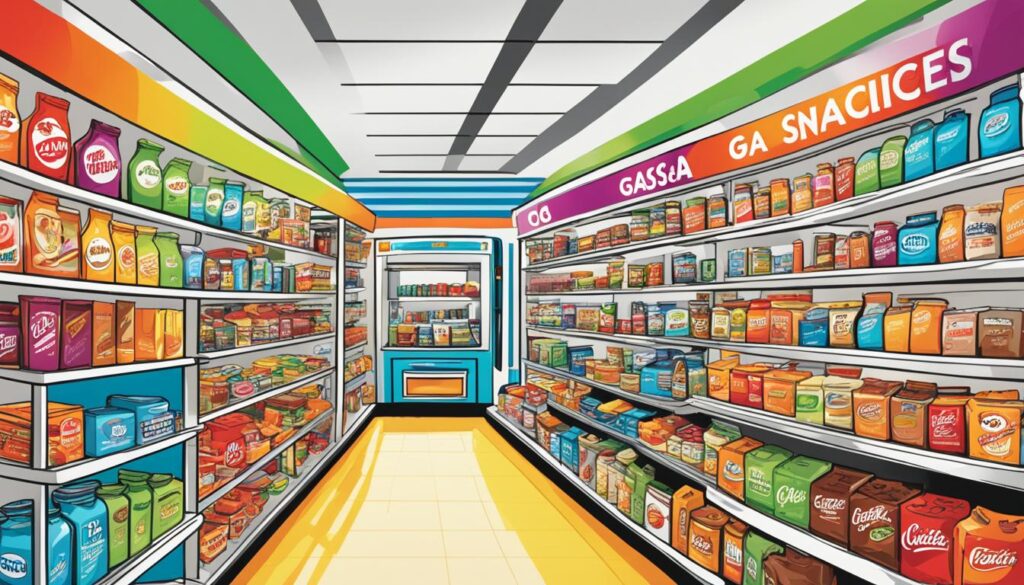Every year, 1.03 billion tonnes of food are thrown away. This is equivalent to the weight of 2,823 Empire State Buildings. The impact of this waste on our planet is huge. It ranks as the third largest source of greenhouse gas emissions in the world. The good news is that emerging technologies in food storage and transport might just be the key to cutting down on this waste.
There are companies hard at work on making food storage and transport better using different methods. They use edible coatings, smart sensors, packaging that’s good for the environment, and modern shipping techniques. These methods aim to reduce waste and promote a future that’s more friendly to the planet.
Introduction to Modern Food Storage and Transport
Modern food storage and transport play key roles in getting fresh food to people. They are crucial for food quality and safety.
Importance of Food Storage and Transport
Good food storage and transport make the food we eat better. They help food last longer and stay safe to eat. This is important for keeping our food supply strong and healthy.
Current Challenges in Food Management
Today, getting food to our plates faces many challenges. These include food going bad, harm to the environment, and issues with delivery. We need new ways to store and move food in smarter, cleaner ways. This helps cut waste, makes food better, and gets it to us more efficiently.
Innovations in Food Storage Technologies
Recent technology in food storage is changing how we deal with food waste. These new solutions make food last longer. They also help the planet by reducing the waste’s impact.
Apeel’s Edible Coating
Apeel’s edible coating is a big leap forward in keeping food fresh. This invisible layer, made from plant materials, extends the lifespan of fruits and veggies. It cuts down on the use of preservatives and lessens the harm of throwing food away.
Smart Sensors and Monitoring Systems
Smart sensors and IoT systems are now watching the food we store. They check and adjust the storage environment to keep food at its best. By watching over things like temperature and humidity, they make food last longer.
Eco-Friendly Packaging Solutions
There’s a focus on eco-friendly packaging to hold the food as well. This kind of packaging is good for the earth and keeps food fresh. Companies now use sustainable packaging to package and deliver food properly. This effort aims to reduce waste, especially of food that looks «ugly» but is still good.
Advanced Transport Solutions in the Food Industry
Technological advances are changing how we move food. These changes are making sure food stays fresh from the farm to you. They are changing how we transport food far distances, keeping it safe and tasty.
Temperature-Controlled Logistics
Temperature-controlled logistics play a key role in moving food. It keeps perishable items fresh during transit. This prevents food spoilage and keeps food high quality when it reaches you.
Blockchain for Supply Chain Transparency
Blockchain brings a new level of openness to the food supply chain. Now, customers can track their food’s journey from start to finish. This adds trust and clearness to the food industry. The use of blockchain is changing how we oversee and improve food transportation.
Drones and Autonomous Delivery Vehicles
New tech like drones and self-driving vehicles is changing food delivery. They offer faster, more efficient delivery options. This tech also cuts down on work and delivery times, making the whole process smoother.
Impact of Technology on Reducing Food Waste
Technology is vital in the fight against food waste. It uses data to make smart decisions and forecast demand with artificial intelligence. These new ways are changing how we manage food, making it more efficient from farm to table. This is helping cut down on the large amount of food we normally throw away.
Data-Driven Decision Making
Tools that use data are a big help. They give businesses a clear look at what they have and what people want to buy. For example, Tenzo helps by using smart tools to figure out how much food businesses need. This means less food gets thrown out because businesses don’t have too much stock. It’s a direct way to fight food waste.
AI for Demand Forecasting
AI is making it easier to guess what people will buy. Being able to predict this, businesses can order or make just the right amount of food. By doing this, they avoid making too much and wasting it. It’s a smart use of technology to keep our food system from wasting so much.
Apps like Too Good To Go and Flashfood take these ideas and put them into action. They help link up extra food with people who want it, at cheaper prices. This way of using technology not only stops food from being wasted but also improves how everyone can get good food. It’s making our food system stronger and better for the planet.

